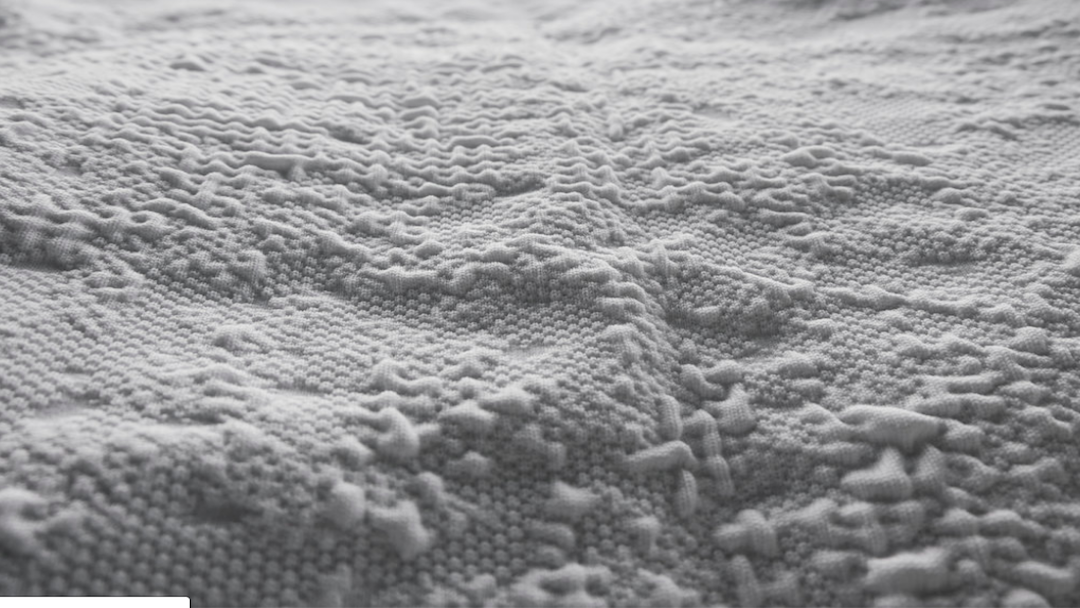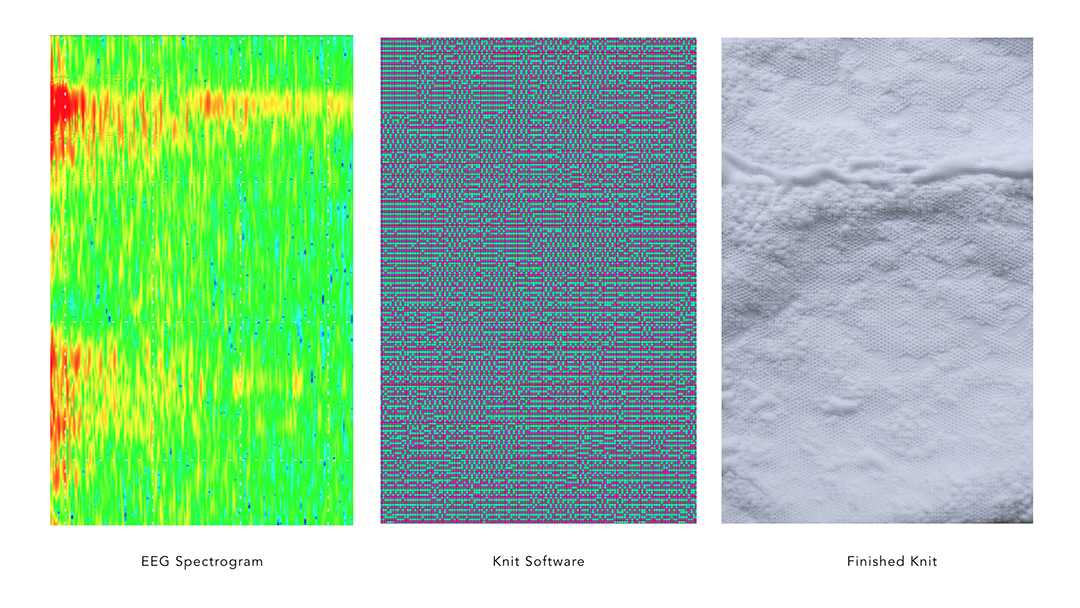 FIRST PRIZE
FIRST PRIZE
Mind in the Machine


Category : GENERAL
By Ani Liu (United States)
This piece takes the brainwave signals of the factory worker and programs the machine uses to create a knit that reflects her cognitive states. When she is stressed, those areas of the knit are tighter; where she is more relaxed, the stitch is looser. It is a project that reflects on the mark of the human hand in the age of mechanical production, as well as all of the anonymous human contributions involved in an economy of automation.
I had the fortunate opportunity to visit a series of factories in Shenzhen and Dongguan in the summer of 2017. I was very taken with the scale of manufacture, and the ratio in which the machines outnumbered the humans. In some senses, the machine reigned high on the priority hierarchy, with seemingly no one looking out for the human. From these experiences, I was inspired to make work about manufacturing and its impact on human labor. I was particularly interested in the worker’s emotional relationship to the end product. Knitting itself is a very old technology that is embedded with culture, tradition, and sentiment. I personally have a few garments that were knit for me by my grandmother before I was born, and I treasure them for the way each loop represents a moment her fingers moved over fibers to create something as an act of love for me. I also love seeing the imperfections- moments where her mind wandered and she slipped a stitch, or quirky lopsided edges where she seemed to be anxious and knit more tightly than the rest of the garment. I became very interested to see if very human and emotional moments like these could be captured by a CNC knitting machine.
I took the EEG brain signal data of a worker using the MUSE. I turned it into a spectrogram, and use those graphs to program a CNC knitting machine to create a knit that reflected the brain data. When she is stressed, those areas of the knit are tighter; where she is more relaxed, the stitch is looser. The process of creating the knit involved learning the programming language of a knitting machine, as well as a lot of trial and error.
In terms of the EEG spectrogram, from top to bottom the changes of brain activity over time, and from left to right, the range of frequencies captured, from Theta to Gamma. Red indicates high activity, green medium, blue, lowest. Delta and Theta waves towards the left are associated with sleeping, dreaming, and meditative states. Alpha in the 7-15 Hz range is associated with relaxed states. Beta in the 13-30 Hz range is associated with Attention, and focus. Gamma- 30 and above, are associated with hyper Alertness.
Nylon, cotton, brainwaves of a factory worker.
22″ x 39″.
JUDGES, COMMENTS
-
Chiaki Hayashi
Loftwork Inc.
Co-founderWe are faced with questions about the relationship between machines and humans in many parts of our lives. Machines were meant to provide support for humans, but upon closer consideration, humans are under the control of machines. An encounter with such a situation at a Chinese knitwear factory led to a unique concept that reconsiders the link between the workers and the finished garments — a program that weaves the fabric loosely and gently when workers are relaxed, but when workers are under stress, pulls the stitches tightly together as they are woven. By doing so, the finished garments seem to give a voice to the many anonymous workers who sustain mass production behind the scenes.






